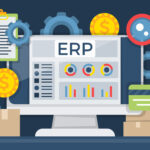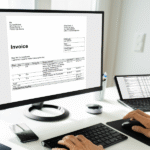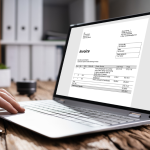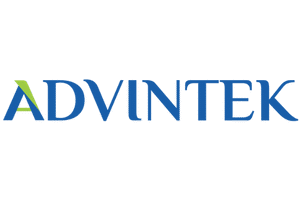The Malaysian government is implementing a structured e-invoicing system as part of its digital transformation efforts. Businesses need to prepare for this transition, especially those with revenue exceeding RM150,000, to comply with the LHDN e-invoice regulations.
Failing to comply with these regulations may result in penalties, audits, or disruptions in operations. Therefore, understanding when and how your business needs to implement e-invoicing is crucial. This guide provides a detailed breakdown of the e-invoicing timeline, implementation process, compliance strategies, and best practices to ensure a seamless transition.
What Is E-Invoicing in Malaysia?
E-invoicing is the process of electronically generating, transmitting, and storing invoices in a structured digital format. Instead of issuing traditional paper-based invoices or PDFs, businesses will submit invoices directly to LHDN (Inland Revenue Board of Malaysia) in real time through an e-invoice system.
This transition is part of Malaysia’s National E-Invoicing Initiative, designed to enhance tax compliance, transparency, and efficiency in financial transactions.
Key Objectives of E-Invoicing
- Reduce Tax Evasion: Ensures all business transactions are recorded and reported in real-time.
- Increase Business Efficiency: Automates invoicing, reducing paperwork, errors, and processing time.
- Simplify Compliance: Aligns businesses with global digital tax reporting standards.
- Enhance Transparency: Provides LHDN with real-time transaction tracking for better financial oversight.
By making e-invoicing mandatory, the government aims to modernize Malaysia’s taxation system, creating a fairer and more efficient business environment.
E-Invoicing Implementation Timeline for Businesses in Malaysia
The government has introduced a phased e-invoicing implementation plan based on annual revenue. Businesses must comply according to the following schedule:
| Annual Revenue (RM) | Mandatory Implementation Date |
| Over 100 million | 1 August 2024 |
| 25 – 100 million | 1 January 2025 |
| 150,000 – 25 million | 1 July 2025 |
| Below 150,000 | Exempted |
Key Notes:
- Businesses with revenue below RM150,000 are permanently exempt from e-invoicing.
- No exceptions for companies once they exceed RM150,000.
- Transition deadlines are strictly enforced – businesses must ensure compliance before their due date.
When Must Businesses Earning Over RM150k in 2024 Start E-Invoicing?
For businesses in Malaysia that cross the RM150,000 revenue threshold in 2024, understanding when e-invoicing becomes mandatory is essential for compliance. The implementation timeline is not immediate—businesses have a grace period before they must fully adopt e-invoicing.
The LHDN e-invoicing framework follows a structured approach based on revenue levels, ensuring that businesses have adequate time to prepare, integrate necessary systems, and transition smoothly without disrupting operations. Below, we break down the key rules, timelines, and examples to clarify when businesses must start issuing e-invoices.
If your business earns more than RM150,000 in annual revenue, you must comply with the following timeline:
- Revenue Threshold Crossed in 2024: Businesses earning above RM150,000 in 2024 must begin e-invoicing on 1 January 2026.
- Revenue Threshold Crossed in 2025: E-invoicing becomes mandatory on 1 January 2027.
Example for Clarity:
- A business begins operations in January 2024 and earns RM180,000 by year-end.
- It is not required to implement e-invoicing in 2025 but must comply from 1 January 2026.
How to Determine If Your Business Exceeds RM150,000?
To confirm whether your business must comply with e-invoicing, you need to calculate your annual revenue. The method depends on the business structure:
- For Incorporated Companies (Sdn Bhd, Bhd)
- Revenue is determined using audited financial statements.
- Revenue is determined using audited financial statements.
- For Sole Proprietors & Partnerships
- Revenue is calculated based on management accounts or tax return forms.
For Businesses with an Irregular Financial Year:
If a company changes its financial year or has an incomplete year of operations, annual revenue is prorated using the following formula:
- (Total revenue ÷ Number of operational months) × 12 months
Example Calculation:
- A company earns RM200,000 over 18 months.
- The annualized revenue would be:
- (RM200,000 ÷ 18) × 12 = RM133,333
- (RM200,000 ÷ 18) × 12 = RM133,333
- Outcome: This business is exempt from e-invoicing as its annual revenue is below RM150,000.
Key Takeaway: Ensure your revenue calculations are accurate to determine your compliance status.
Examples for Clarity
Understanding the exact timeline for e-invoicing compliance can be complex, so let’s explore different real-world business scenarios to illustrate the implementation rules in action.
- Scenario 1: A New Business Exceeds RM150,000 in 2024
Company A was established in March 2024 and recorded an annual revenue of RM180,000 by December 2024.
What Happens Next?
- The company does not need to start e-invoicing in 2025.
- However, it must comply with e-invoicing regulations from 1 January 2026.
| Year | Revenue | E-Invoicing Requirement |
| 2024 | RM180,000 | No e-invoicing required |
| 2025 | RM200,000 | No e-invoicing required |
| 2026 | RM250,000 | Mandatory E-Invoicing Begins |
- Scenario 2: Business Crosses RM150,000 in Late 2024
Company B has been operating for several years but only crossed the RM150,000 revenue threshold in October 2024.
What Happens Next?
- The company does not need to implement e-invoicing immediately in 2025.
- It must start e-invoicing from 1 January 2026.
| Year | Revenue | E-Invoicing Requirement |
| 2024 | RM155,000 | No e-invoicing required |
| 2025 | RM175,000 | No e-invoicing required |
| 2026 | RM220,000 | Mandatory E-Invoicing Begins |
- Scenario 3: A Business Crosses RM150,000 in 2025
Company C has an annual revenue of RM120,000 in 2024, meaning it is not required to implement e-invoicing. However, in August 2025, the company’s revenue surpasses RM150,000.
What Happens Next?
- Since the threshold was crossed in 2025, the company will not need to e-invoice in 2026.
- E-invoicing becomes mandatory on 1 January 2027.
| Year | Revenue | E-Invoicing Requirement |
| 2024 | RM120,000 | No e-invoicing required |
| 2025 | RM180,000 | No e-invoicing required |
| 2026 | RM210,000 | No e-invoicing required |
| 2027 | RM230,000 | Mandatory E-Invoicing Begins |
Why Is There a Delay in E-Invoicing Implementation After Crossing RM150,000?
The Malaysian government has strategically designed a grace period to allow businesses sufficient time to:
- Upgrade Their Systems
- Businesses may need to invest in e-invoicing software that integrates with the LHDN e-invoicing system.
- If businesses already use ERP solutions (SAP, Xero, QuickBooks), they must ensure seamless integration.
- Businesses may need to invest in e-invoicing software that integrates with the LHDN e-invoicing system.
- Train Employees
- Staff members need to be educated on new e-invoicing procedures, compliance requirements, and reporting structures.
- Staff members need to be educated on new e-invoicing procedures, compliance requirements, and reporting structures.
- Align Supply Chain & Customers
- Businesses must work with suppliers, clients, and financial teams to ensure smooth invoicing and tax reporting processes.
- Businesses must work with suppliers, clients, and financial teams to ensure smooth invoicing and tax reporting processes.
- Test the E-Invoicing Workflow
- Many companies will run a trial phase before full implementation to identify potential issues and inefficiencies.
What Happens If a Business Does Not Implement E-Invoicing on Time?
Failing to comply with the LHDN e-invoicing timeline can result in:
- Penalties & Fines
The government may impose financial penalties for non-compliance.
- Increased Audit Risks
Businesses that fail to report transactions accurately may face tax audits and investigations.
- Operational Disruptions
Without a proper e-invoicing system, businesses may struggle with cash flow, tax filings, and supplier invoicing.
To avoid these issues, businesses must prepare in advance and transition smoothly.
How Advintek Can Help You Transition to E-Invoicing
Switching to e-invoicing can be a complex process, but Advintek makes it seamless and hassle-free.
Why Choose Advintek for E-Invoicing?
- End-to-End Compliance – We ensure your business is fully compliant with LHDN’s e-invoicing requirements.
- Seamless Integration – Our solutions work with existing accounting and ERP systems (SAP, Xero, QuickBooks, etc.).
- User-Friendly Interface – Easy-to-use platform for businesses of all sizes.
- Expert Consultation & Support – We provide ongoing support to help businesses stay compliant.
- Secure & Reliable – ISO-certified and PDPA-compliant, ensuring your business data is protected.
Conclusion: Stay Ahead with Advintek
E-invoicing isn’t just a compliance requirement; it’s an opportunity to modernize your business operations. Advintek is here to ensure that your transition is smooth, efficient, and fully compliant with Malaysia’s regulations. With our cutting-edge solutions and expert guidance, your business can embrace the future of invoicing confidently.
Ready to get started? Contact Advintek today to learn more about how we can support your e-invoicing journey.









